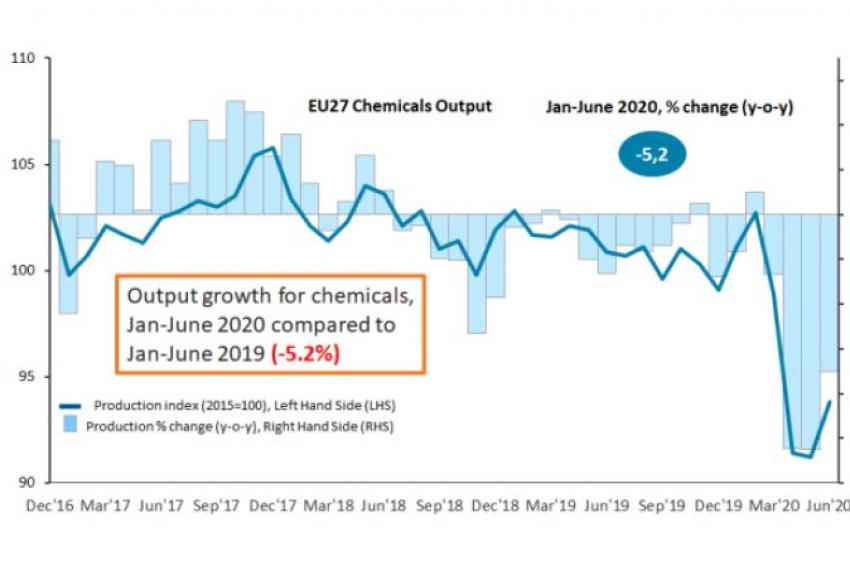CEFIC: EU Chemical Output Shows Small Signs of Recovery
CEFIC stated that output data shows small signs of recovery: June data reported 2.9% output growth compared to May of the same year, but still about 9% below the pre-crisis level (June 2019 compared to February of 2020).
Output continued to recover gradually, and the bottom of 2020 seems to be reached in April, but the spill-over effect of the crisis will continue to appear for a while. Global chemical output declined by 3.4% in the first half of 2020 compared to the same period of 2019. CEFIC said that China is still an exception; output has already experienced the V-shape and production level in July was the highest one since ever.
Small and medium-sized enterprises operating in the chemicals business are still facing liquidity issues following the Covid-19 outbreak: Many of the SMEs are family owned mid-size companies, which typically do not have a large backstop. CEFIC thinks that they will continue to face delayed payments in the near future from customers, but that it is too early to capture a complete measure of these effects.
Marco Mensink, CEFIC’s Director General, commented: “While like other manufacturing sectors, the EU chemical industry has been severely hit by the current economic downturn during the Covid-19 outbreak, we are now encouraged to see some first, although very modest, signs of recovery in the European chemical output.”
“At the same time, it is clear that the impact of the crisis varies between the sectors of the chemical industry and the overall decline in cross-sectoral manufacturing activity, including automotive and refining, is likely to affect the pace of some investments. This makes the need for a coherent policy framework to support European investments into these technologies all the more critical and timely,” Mensink added.
He concluded: “At CEFIC, we are calling for a ‘sectoral Green Deal’ to drive greater policy coherence. With the right policy framework, the EU Recovery Package could be an opportunity to prioritize investments into innovative Green Deal solutions, such as e-crackers, chemical recycling, hydrogen, CCS and CCU infrastructure and other new technologies our sector is innovating and developing.”






